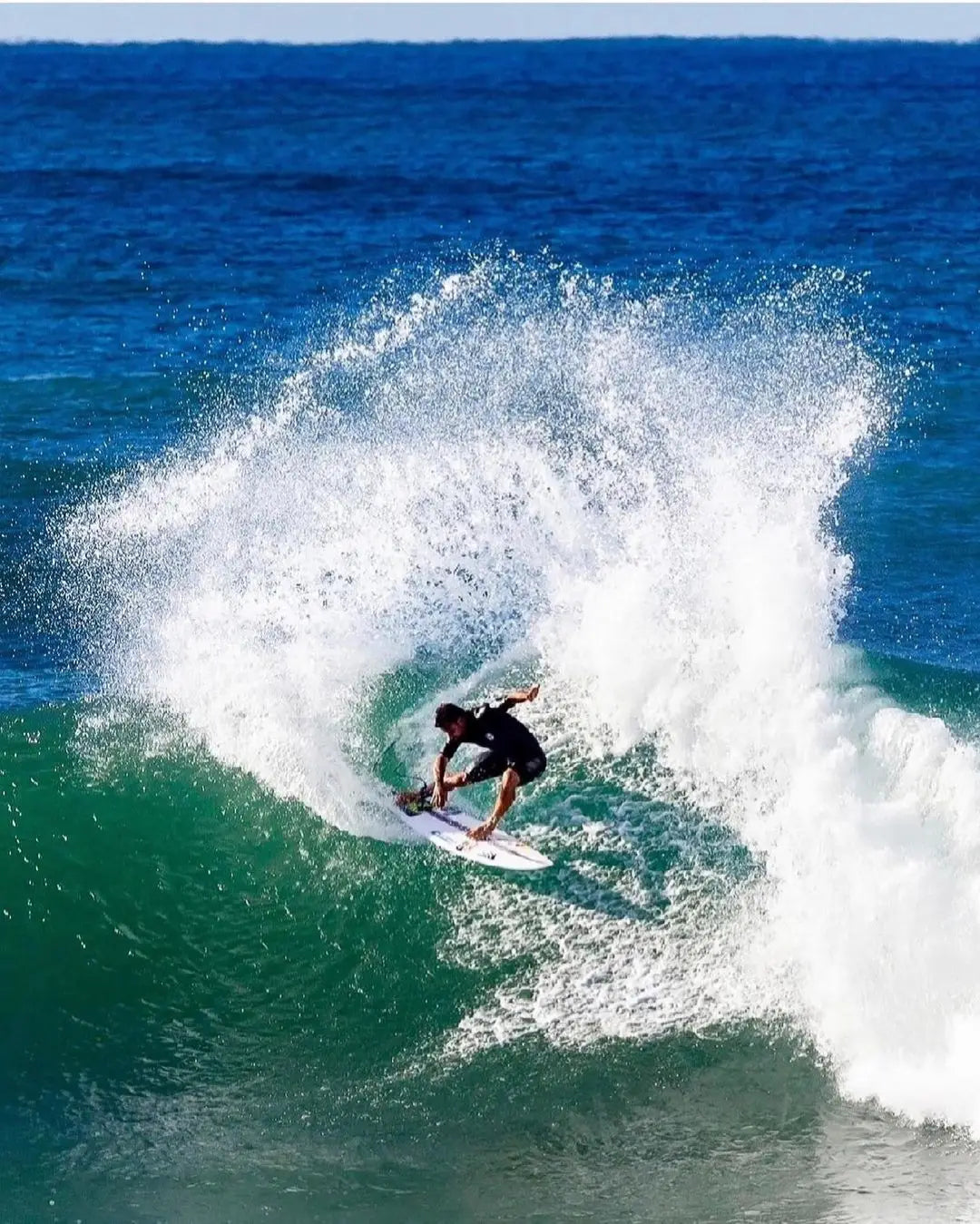Back-Footed vs. Front-Footed Surfing
BACK-FOOTED VS. FRONT-FOOTED SURFING
📷 @adam.eyes 🏄♂️@bourezmichel
If you talk to enough people about surfing, you are bound to hear the terms “back-footed surfer” and “front-footed surfer”. While these terms are self-explanatory, there is a lot more riding on them than their simple definitions.
Different surfboards and different styles of surfing work better with front and back-footed surfing, so it’s worthwhile taking a closer look at the two approaches. Prior to the invention of the thruster, most surfboards being ridden were single fins and twins.
Most of them were voluminous with the widest points of the surfboard farther forward than midpoint. While these surfboards could be ridden from just about anywhere (and often saw surfers moving their feet around on their surfboards while riding waves), they were predominantly surfed off the front foot. This approach is more driving and forward-focused, while emphasizing down-the-line speed and lateral rail turns. The invention of the thruster turned the entire paradigm on its head. These lower-volume, higher-rockered boards were loose and maneuverable. The cluster of three fins at the back of the surfboard allowed for aggressive, vertical, top-to-bottom surfing.
The back-foot surfing approach is facilitated by standing with your back foot over the fin cluster and weighting/driving the board heavily on the back foot. While back-footed surfing is certainly more common, front-footed surfing is not entirely lost to history. Some of the wider, flatter, hybrid modern shapes lend themselves to front-footed surfing, such as Firewire Glazer model. Predominantly front-footed surfers find that these surfboards work well for them, while those who prefer a back-footed approach seem to struggle on them.
The Lost Round Nose Fish and Puddle Fish on the other hand, are wide, flatter surfboards that still tend to maintain their back-footed feel. These surfboards tend to be faster down the line and a bit more forgiving and user-friendly, while still maintaining much of the maneuverability of the modern high-performance thruster.
Since they have many of the characteristics of a standard shortboard. many people find it easy to transition back to back-footed surfing when they swap back to their normal high-performance surfboards.
Regardless, of your style of surfing, we at Hawaiian South Shore have a wide range of surfboards that cater to just about every approach. Stop on by and take a look!
More to Read...
👉How to Choose the Right Leash for Your Surfboard?
👉Swells 101: How Are Waves Formed?
👉Surf Better With This 15-minute Fitness Routine

